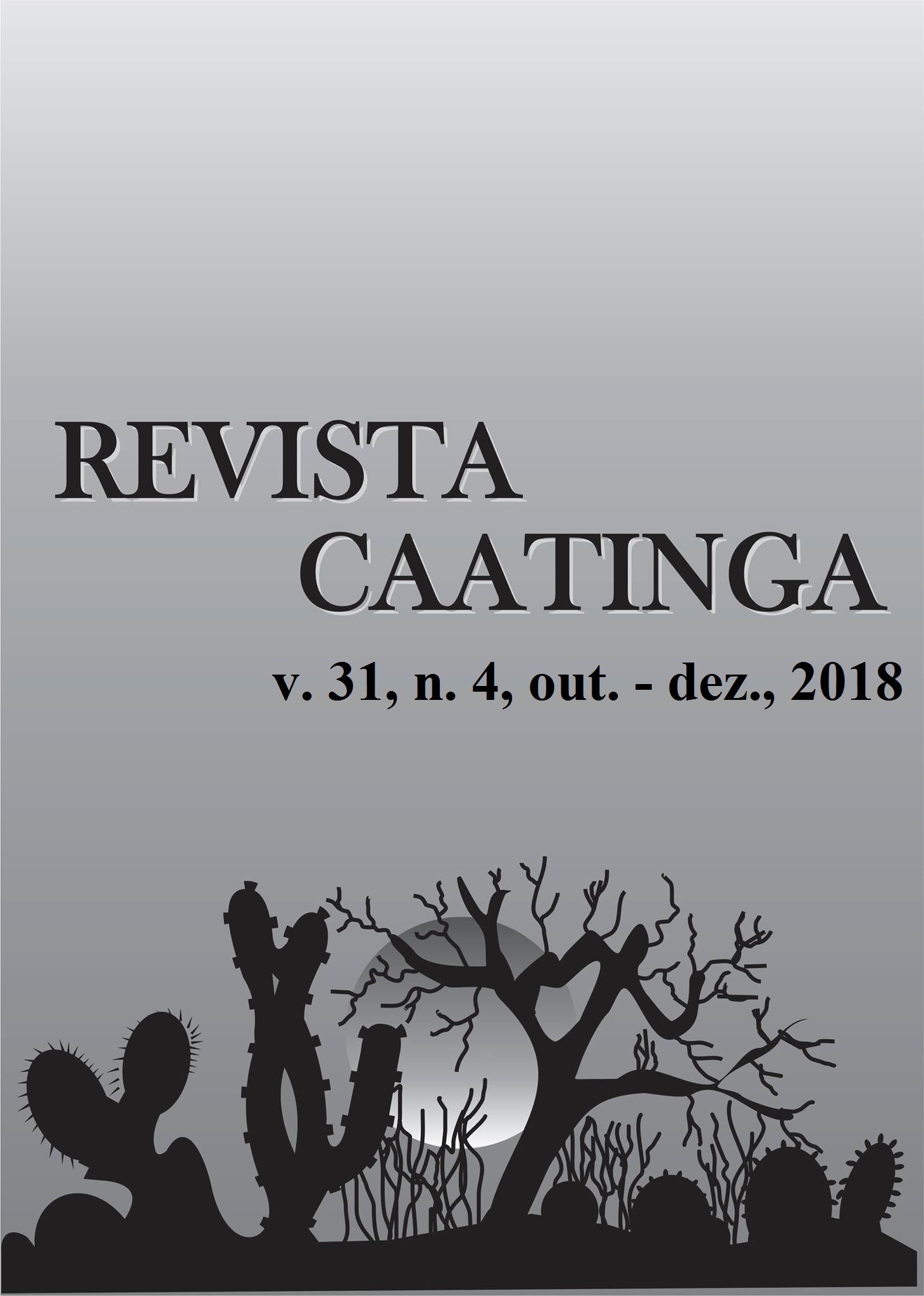GROWTH DYNAMICS OF SESAME CULTIVARS
DOI:
https://doi.org/10.1590/1983-21252018v31n430rcKeywords:
Sesamum indicum. Leaf area. Harvest time. Physiological parameters.Abstract
Sesame is a plant with high morphological and physiological complexity, with great variability in growth habit. Quantitative growth analysis is an accessible and accurate tool for evaluating plant development and the contribution of different physiological processes to plant performance. In view of this, the purpose of this study was to evaluate the growth of sesame cultivars in two cropping seasons in the conditions of Mossoró-RN. Two experiments were conducted in Horta Didactics of UFERSA. The experimental delineation in each time was a randomized complete block design with four replications. The treatments were arranged in split plots where each experimental plot contained different sesame cultivars, CNPA G2, CNPA G3 and CNPA G4, and the subplots represented seven collection times, 21, 35, 49, 63, 77, 91 and 105 days after sowing (DAS). The growth of the sesame cultivars was slow at the beginning of the crop cycle, intensifying at the beginning of flowering (after 35 DAS). Among the physiological indexes studied, CNPA G4 cultivar was more efficient in relation to growth and varied depending on the cropping season.
Downloads
Downloads
Published
Issue
Section
License
Os Autores que publicam na Revista Caatinga concordam com os seguintes termos:
a) Os Autores mantêm os direitos autorais e concedem à revista o direito de primeira publicação, com o trabalho simultaneamente licenciado sob a Licença Creative Commons do tipo atribuição CC-BY, para todo o conteúdo do periódico, exceto onde estiver identificado, que permite o compartilhamento do trabalho com reconhecimento da autoria e publicação inicial nesta revista, sem fins comerciais.
b) Os Autores têm autorização para distribuição não-exclusiva da versão do trabalho publicada nesta revista (ex.: publicar em repositório institucional ou como capítulo de livro), com reconhecimento de autoria e publicação inicial nesta revista.
c) Os Autores têm permissão e são estimulados a publicar e distribuir seu trabalho online (ex.: em repositórios institucionais ou na sua página pessoal) a qualquer ponto antes ou durante o processo editorial, já que isso pode gerar alterações produtivas, bem como aumentar o impacto e a citação do trabalho publicado (Veja O Efeito do Acesso Livre).







